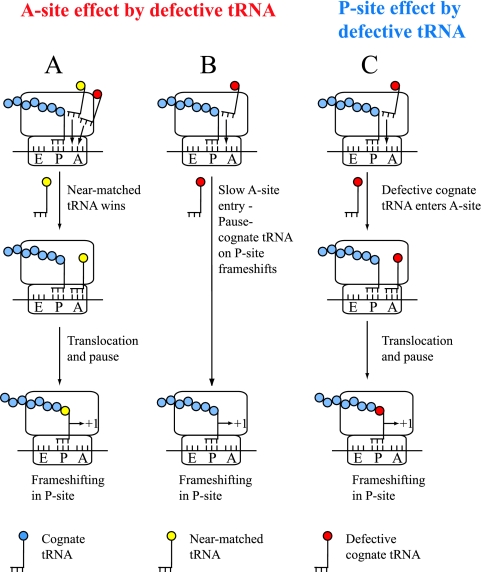FIG. 6.
The dual-error model for frameshifting. Defects in tRNA may induce frameshifting in three different ways. (A) The defective tRNA is slow in entering the A site, allowing a third-position-mismatched tRNA to decode the A-site codon (first error). After a normal three-nucleotide translocation to the P site, the third-position-mismatched tRNA is prone to slip into an overlapping reading frame (second error). (B) The defective tRNA is slow in entering the A site (first error), providing a pause when the P-site tRNA may slip (second error). (C) The defective tRNA is not excluded by the ribosomal A site and decodes the codon in the A site (first error), but once it has been translocated into the P site, it may slip on the mRNA (second error). “Defective” can indicate either alterations in the primary sequence or hypo- or hypermodification of the tRNA. To make the figure easier to read, no tRNA has been depicted in the E site, although in all these cases when a frameshift occurs in the P site (lower part of the figure), it is likely that the E site is occupied (see text). (Adapted from reference 37.)

